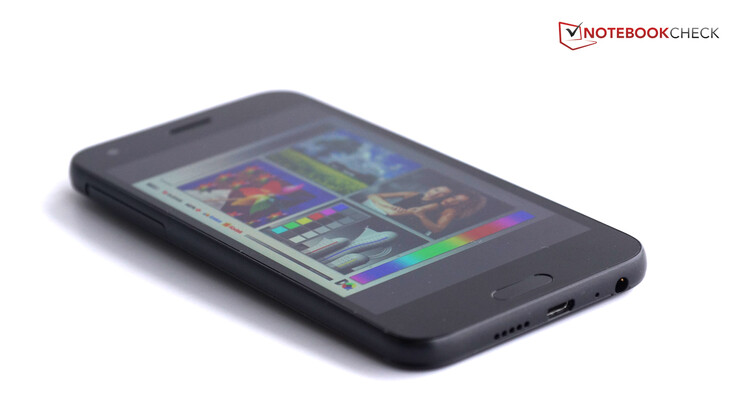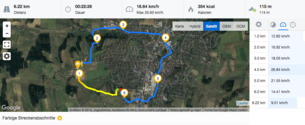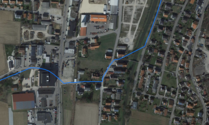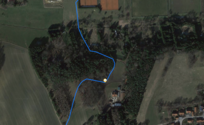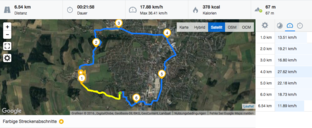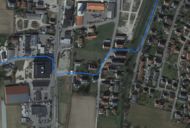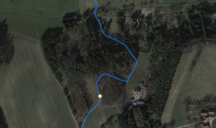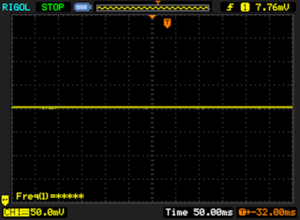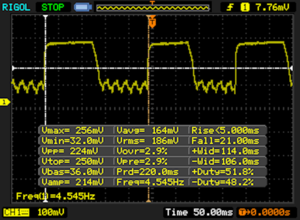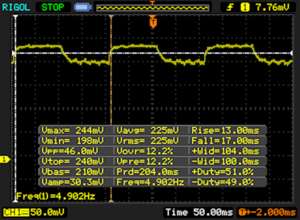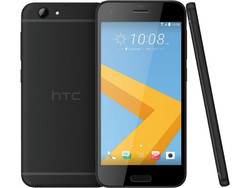Breve Análise do Smartphone HTC One A9s
Os Top 10
» Os Top 10 Portáteis Multimídia
» Os Top 10 Portáteis de Jogos
» Os Top 10 Portáteis Leves para Jogos
» Os Top 10 Portáteis Acessíveis de Escritório/Empresariais
» Os Top 10 Portáteis Premium de Escritório/Empresariais
» Os Top 10 dos Portáteis Workstation
» Os Top 10 Subportáteis
» Os Top 10 Ultrabooks
» Os Top 10 Conversíveis
» Os Top 10 Tablets
» Os Top 10 Smartphones
» A melhores Telas de Portáteis Analisadas Pela Notebookcheck
» Top 10 dos portáteis abaixo dos 500 Euros da Notebookcheck
» Top 10 dos Portáteis abaixo dos 300 Euros
Size Comparison
| Networking | |
| iperf3 transmit AX12 | |
| Apple iPhone 7 (Klaus I211) | |
| Samsung Galaxy S7 | |
| HTC One A9s | |
| HTC Desire 10 Lifestyle | |
| iperf3 receive AX12 | |
| Apple iPhone 7 (Klaus I211) | |
| Samsung Galaxy S7 | |
| HTC One A9s | |
| HTC Desire 10 Lifestyle | |
| |||||||||||||||||||||||||
iluminação: 85 %
iluminação com acumulador: 348 cd/m²
Contraste: 1513:1 (Preto: 0.23 cd/m²)
ΔE ColorChecker Calman: 3.5 | ∀{0.5-29.43 Ø4.78}
ΔE Greyscale Calman: 4 | ∀{0.09-98 Ø5}
95.1% sRGB (Calman 2D)
Gamma: 2.3
CCT: 6527 K
| HTC One A9s IPS, 1280x720, 5" | OnePlus 2 IPS, 1920x1080, 5.5" | Lenovo ZUK Z2 IPS, 1920x1080, 5" | Gigaset ME IPS, 1920x1080, 5" | Samsung Galaxy A5 2016 Super AMOLED, 1920x1080, 5.2" | HTC One A9 AMOLED, 1920x1080, 5" | |
|---|---|---|---|---|---|---|
| Screen | 5% | -18% | -10% | 31% | 24% | |
| Brightness middle (cd/m²) | 348 | 451 30% | 512 47% | 445 28% | 378 9% | 346 -1% |
| Brightness (cd/m²) | 320 | 446 39% | 502 57% | 456 43% | 380 19% | 349 9% |
| Brightness Distribution (%) | 85 | 90 6% | 84 -1% | 93 9% | 91 7% | 93 9% |
| Black Level * (cd/m²) | 0.23 | 0.3 -30% | 0.58 -152% | 0.38 -65% | ||
| Contrast (:1) | 1513 | 1503 -1% | 883 -42% | 1171 -23% | ||
| Colorchecker dE 2000 * | 3.5 | 3.84 -10% | 3.8 -9% | 4.29 -23% | 1.95 44% | 1.55 56% |
| Colorchecker dE 2000 max. * | 6.4 | 11.2 -75% | 7.89 -23% | 3.09 52% | ||
| Greyscale dE 2000 * | 4 | 3.97 1% | 2.7 32% | 4.97 -24% | 1.86 53% | 2.05 49% |
| Gamma | 2.3 96% | 2.46 89% | 2.09 105% | 2.57 86% | 2.13 103% | 2.15 102% |
| CCT | 6527 100% | 7283 89% | 6076 107% | 7625 85% | 6376 102% | 6267 104% |
| Color Space (Percent of AdobeRGB 1998) (%) | 58.07 | |||||
| Color Space (Percent of sRGB) (%) | 90.14 |
* ... menor é melhor
Cintilação da tela / PWM (modulação por largura de pulso)
| Tela tremeluzindo / PWM não detectado | |||
[pwm_comparison] Em comparação: 53 % de todos os dispositivos testados não usam PWM para escurecer a tela. Se PWM foi detectado, uma média de 8118 (mínimo: 5 - máximo: 343500) Hz foi medida. | |||
Exibir tempos de resposta
| ↔ Tempo de resposta preto para branco | ||
|---|---|---|
| 26 ms ... ascensão ↗ e queda ↘ combinadas | ↗ 5 ms ascensão | |
| ↘ 21 ms queda | ||
| A tela mostra taxas de resposta relativamente lentas em nossos testes e pode ser muito lenta para os jogadores. Em comparação, todos os dispositivos testados variam de 0.1 (mínimo) a 240 (máximo) ms. » 61 % de todos os dispositivos são melhores. Isso significa que o tempo de resposta medido é pior que a média de todos os dispositivos testados (20.2 ms). | ||
| ↔ Tempo de resposta 50% cinza a 80% cinza | ||
| 30 ms ... ascensão ↗ e queda ↘ combinadas | ↗ 13 ms ascensão | |
| ↘ 17 ms queda | ||
| A tela mostra taxas de resposta lentas em nossos testes e será insatisfatória para os jogadores. Em comparação, todos os dispositivos testados variam de 0.165 (mínimo) a 636 (máximo) ms. » 39 % de todos os dispositivos são melhores. Isso significa que o tempo de resposta medido é semelhante à média de todos os dispositivos testados (31.6 ms). | ||
| AnTuTu v6 - Total Score (classificar por valor) | |
| HTC One A9s | |
| OnePlus 2 | |
| Lenovo ZUK Z2 | |
| Gigaset ME | |
| Samsung Galaxy A5 2016 | |
| Geekbench 4.0 | |
| 64 Bit Single-Core Score (classificar por valor) | |
| HTC One A9s | |
| 64 Bit Multi-Core Score (classificar por valor) | |
| HTC One A9s | |
| GFXBench (DX / GLBenchmark) 2.7 | |
| T-Rex Onscreen (classificar por valor) | |
| HTC One A9s | |
| OnePlus 2 | |
| Lenovo ZUK Z2 | |
| Gigaset ME | |
| Samsung Galaxy A5 2016 | |
| HTC One A9 | |
| 1920x1080 T-Rex Offscreen (classificar por valor) | |
| HTC One A9s | |
| OnePlus 2 | |
| Lenovo ZUK Z2 | |
| Gigaset ME | |
| Samsung Galaxy A5 2016 | |
| HTC One A9 | |
| GFXBench 3.0 | |
| on screen Manhattan Onscreen OGL (classificar por valor) | |
| HTC One A9s | |
| OnePlus 2 | |
| Lenovo ZUK Z2 | |
| Gigaset ME | |
| Samsung Galaxy A5 2016 | |
| HTC One A9 | |
| 1920x1080 1080p Manhattan Offscreen (classificar por valor) | |
| HTC One A9s | |
| OnePlus 2 | |
| Lenovo ZUK Z2 | |
| Gigaset ME | |
| Samsung Galaxy A5 2016 | |
| HTC One A9 | |
| GFXBench 3.1 | |
| on screen Manhattan ES 3.1 Onscreen (classificar por valor) | |
| HTC One A9s | |
| OnePlus 2 | |
| Lenovo ZUK Z2 | |
| Gigaset ME | |
| HTC One A9 | |
| 1920x1080 Manhattan ES 3.1 Offscreen (classificar por valor) | |
| HTC One A9s | |
| OnePlus 2 | |
| Lenovo ZUK Z2 | |
| Gigaset ME | |
| HTC One A9 | |
| PCMark for Android - Work performance score (classificar por valor) | |
| HTC One A9s | |
| OnePlus 2 | |
| Lenovo ZUK Z2 | |
| Gigaset ME | |
| Samsung Galaxy A5 2016 | |
| HTC One A9 | |
| Octane V2 - Total Score (classificar por valor) | |
| HTC One A9s | |
| OnePlus 2 | |
| Lenovo ZUK Z2 | |
| Gigaset ME | |
| Samsung Galaxy A5 2016 | |
| HTC One A9 | |
| Mozilla Kraken 1.1 - Total (classificar por valor) | |
| HTC One A9s | |
| OnePlus 2 | |
| Lenovo ZUK Z2 | |
| Gigaset ME | |
| Samsung Galaxy A5 2016 | |
| HTC One A9 | |
| WebXPRT 2015 - Overall (classificar por valor) | |
| HTC One A9s | |
| OnePlus 2 | |
| Samsung Galaxy A5 2016 | |
| HTC One A9 | |
| JetStream 1.1 - Total Score (classificar por valor) | |
| HTC One A9s | |
| OnePlus 2 | |
| Lenovo ZUK Z2 | |
| Gigaset ME | |
| Samsung Galaxy A5 2016 | |
| HTC One A9 | |
* ... menor é melhor
| AndroBench 3-5 | |
| Sequential Read 256KB (classificar por valor) | |
| HTC One A9s | |
| OnePlus 2 | |
| Lenovo ZUK Z2 | |
| Gigaset ME | |
| Samsung Galaxy A5 2016 | |
| HTC One A9 | |
| Sequential Write 256KB (classificar por valor) | |
| HTC One A9s | |
| OnePlus 2 | |
| Lenovo ZUK Z2 | |
| Gigaset ME | |
| Samsung Galaxy A5 2016 | |
| HTC One A9 | |
| Random Read 4KB (classificar por valor) | |
| HTC One A9s | |
| OnePlus 2 | |
| Lenovo ZUK Z2 | |
| Gigaset ME | |
| Samsung Galaxy A5 2016 | |
| HTC One A9 | |
| Random Write 4KB (classificar por valor) | |
| HTC One A9s | |
| OnePlus 2 | |
| Lenovo ZUK Z2 | |
| Gigaset ME | |
| Samsung Galaxy A5 2016 | |
| HTC One A9 | |
| Sequential Read 256KB SDCard (classificar por valor) | |
| HTC One A9s | |
| Sequential Write 256KB SDCard (classificar por valor) | |
| HTC One A9s | |
| Asphalt 8: Airborne | |||
| Configurações | Valor | ||
| high | 29 fps | ||
| very low | 30 fps | ||
| Dead Trigger 2 | |||
| Configurações | Valor | ||
| high | 58 fps | ||
(+) A temperatura máxima no lado superior é 33.5 °C / 92 F, em comparação com a média de 35.2 °C / 95 F , variando de 21.9 a 247 °C para a classe Smartphone.
(+) A parte inferior aquece até um máximo de 32.3 °C / 90 F, em comparação com a média de 34 °C / 93 F
(+) Em uso inativo, a temperatura média para o lado superior é 30.1 °C / 86 F, em comparação com a média do dispositivo de 32.9 °C / ### class_avg_f### F.
HTC One A9s análise de áudio
(+) | os alto-falantes podem tocar relativamente alto (###valor### dB)
Graves 100 - 315Hz
(-) | quase nenhum baixo - em média 18.2% menor que a mediana
(±) | a linearidade dos graves é média (13.5% delta para a frequência anterior)
Médios 400 - 2.000 Hz
(±) | médios mais altos - em média 5.4% maior que a mediana
(+) | médios são lineares (5.4% delta para frequência anterior)
Altos 2 - 16 kHz
(±) | máximos mais altos - em média 11.7% maior que a mediana
(±) | a linearidade dos máximos é média (8.3% delta para frequência anterior)
Geral 100 - 16.000 Hz
(±) | a linearidade do som geral é média (28.6% diferença em relação à mediana)
Comparado com a mesma classe
» 74% de todos os dispositivos testados nesta classe foram melhores, 4% semelhantes, 22% piores
» O melhor teve um delta de 11%, a média foi 35%, o pior foi 134%
Comparado com todos os dispositivos testados
» 86% de todos os dispositivos testados foram melhores, 3% semelhantes, 12% piores
» O melhor teve um delta de 4%, a média foi 24%, o pior foi 134%
Apple iPhone 7 análise de áudio
(+) | os alto-falantes podem tocar relativamente alto (###valor### dB)
Graves 100 - 315Hz
(-) | quase nenhum baixo - em média 21.8% menor que a mediana
(±) | a linearidade dos graves é média (9.5% delta para a frequência anterior)
Médios 400 - 2.000 Hz
(+) | médios equilibrados - apenas 4.3% longe da mediana
(+) | médios são lineares (6% delta para frequência anterior)
Altos 2 - 16 kHz
(±) | máximos mais altos - em média 5.9% maior que a mediana
(±) | a linearidade dos máximos é média (8.2% delta para frequência anterior)
Geral 100 - 16.000 Hz
(±) | a linearidade do som geral é média (20.9% diferença em relação à mediana)
Comparado com a mesma classe
» 38% de todos os dispositivos testados nesta classe foram melhores, 8% semelhantes, 54% piores
» O melhor teve um delta de 11%, a média foi 35%, o pior foi 134%
Comparado com todos os dispositivos testados
» 56% de todos os dispositivos testados foram melhores, 8% semelhantes, 36% piores
» O melhor teve um delta de 4%, a média foi 24%, o pior foi 134%
| desligado | |
| Ocioso | |
| Carga |
|
Key:
min: | |
| HTC One A9s 2300 mAh | OnePlus 2 mAh | Lenovo ZUK Z2 3500 mAh | Gigaset ME 3000 mAh | Samsung Galaxy A5 2016 2900 mAh | HTC One A9 mAh | |
|---|---|---|---|---|---|---|
| Power Consumption | 13% | -4% | -20% | 25% | 25% | |
| Idle Minimum * (Watt) | 1.29 | 0.6 53% | 1.31 -2% | 0.75 42% | 0.96 26% | 0.9 30% |
| Idle Average * (Watt) | 2.28 | 1.7 25% | 2.03 11% | 1.7 25% | 1.64 28% | 1.2 47% |
| Idle Maximum * (Watt) | 2.52 | 1.8 29% | 2.08 17% | 1.84 27% | 1.71 32% | 1.4 44% |
| Load Average * (Watt) | 4.06 | 5.7 -40% | 5.45 -34% | 7.18 -77% | 2.98 27% | 3.8 6% |
| Load Maximum * (Watt) | 5.91 | 6 -2% | 6.75 -14% | 12.75 -116% | 5.08 14% | 5.9 -0% |
* ... menor é melhor
| HTC One A9s 2300 mAh | OnePlus 2 mAh | Lenovo ZUK Z2 3500 mAh | Gigaset ME 3000 mAh | Samsung Galaxy A5 2016 2900 mAh | HTC One A9 mAh | |
|---|---|---|---|---|---|---|
| Duração da bateria | -12% | 6% | -45% | 46% | -26% | |
| Reader / Idle (h) | 25.7 | 23.2 -10% | 38.7 51% | 19.2 -25% | ||
| H.264 (h) | 9.8 | 9.7 -1% | 11.2 14% | 7.8 -20% | ||
| WiFi v1.3 (h) | 8.6 | 5.9 -31% | 9.1 6% | 6.6 -23% | 10.4 21% | 6.1 -29% |
| Load (h) | 4.1 | 3.8 -7% | 1.4 -66% | 8.1 98% | 2.9 -29% |
Pro
Contra
O HTC One A9s definitivamente é um smartphone mainstream sólido. Você pode viver com a tela de baixa resolução graças à alta razão de contraste e cores com boa precisão, mas o painel é muito escuro. O padrão wireless 802.11ac faltante, não deveria ser um grande problemas para muito usuários. O desempenho e o equipamento de memória, inclusive foi melhorado – um motivo para se contentar?
Sim, o HTC One A9s é, de fato, um bom smartphone, mas é um segmento com muitos aparelho bons da Lenovo, OnePlus ou Samsung. A concorrência é, portanto, forte para o HTC One A9s, e alguns deles inclusive oferecem mais recursos de gama alta em comparação com o nosso modelo de teste. Mas será que você realmente precisa de um flash dual-LED, autofoco laser ou resoluções mais altas da câmera? Somente você pode responder isso.
O HTC One A9s é uma atualização bem sucedida do HTC One A9 e forneceu bons desempenhos em quase todas as seções de teste, mas não se destaca entre os rivais. Não existem verdadeiros destaques, mas você recebe um aparelho confiável sem frescuras.
A lista de desvantagens sérias para o HTC One A9s é bastante pequena: O alto falante poderia soar melhor e o sinal de WLAN poderia ser melhor. De outra forma, os resultados do teste são bons, mas não há destaques. Portanto, é um aparelho mainstream e um companheiro discreto e confiável, na prática, o qual também pode ser uma qualidade.
HTC One A9s
- 12/15/2016 v6 (old)
Florian Wimmer




